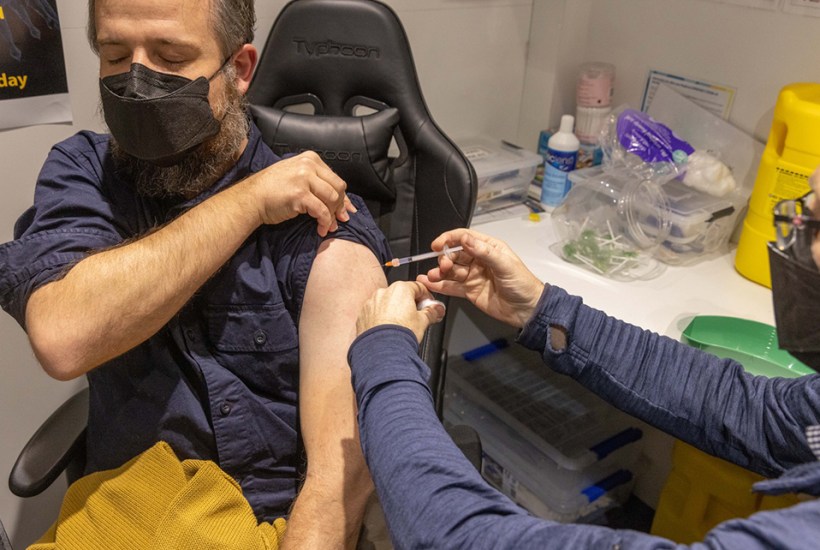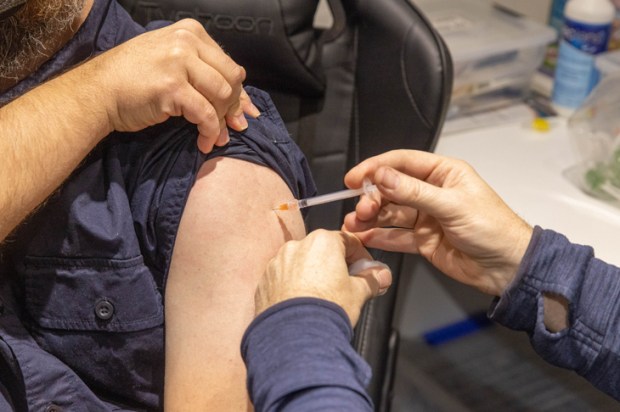A Rasmussen poll published on 31 March reported that 11 per cent of respondents said a member of their household had died with Covid, and 10 per cent said someone had died from a vaccine side-effect. If we add to the total those who have died from lockdown conseqauences like cancelled cancer and cardiovascular screenings and cancellations, added difficulties on accessing healthcare, reduced beds and staff in hospitals from isolation and social distancing rules, etc, the scale of non-Covid excess deaths is clearly substantial. Yet, unlike the breathless daily press briefings on Covid case counts and deaths in 2020 to ‘21, there is no urgent investigation of what’s going on. Journalists attending the ritual of daily press briefings by the health ministers and officers were ‘all graduates from the Uriah Heep school of obsequiousness’ (Angus Dalgleish). The lack of curiosity from the press and parliamentarians adds to the institutionalised indifference to lockdown and vaccine harms that amounts to outright contempt of the public. Remarkably, we still don’t have all the necessary details and raw data from trials of the Pfizer and Moderna vaccines whose claimed efficacies continue to be seriously disputed by reputable scientists.
On 8 February, the Australian Technical Advisory Group on Immunisation published its latest advice on boosters. ATAGI finally acknowledged the harm-benefit equation for boosters doesn’t compute for young people: ‘Adolescents and younger adults have a lower age-related risk of severe Covid-19, and a comparatively higher risk of myocarditis following vaccination’. It declined to recommend booster doses for under-18s; recommended it for over-65s; and healthy 18 to 64-year-olds were advised to ‘consider a 2023 booster dose… based on an individual risk benefit assessment with their immunisation provider’. A January 2021 ‘Nonclinical Evaluation Report’ of Pfizer vaccines from Australia’s Therapeutic Goods Administration was also published recently, following a Freedom of Inquiry request (a scandal in itself). The TGA states:
– The microscopic lung inflammation in monkeys after infection was ‘almost similar’ in immunised and control groups;
– Long-term immunity after a second dose was questionable because the antibody and T cell responses ‘declined quickly over 5 weeks’.
– Data was not available on: distribution and degradation of ‘the S antigen-encoding mRNA’, so the half-life and pattern of distribution was unknown; long-term protection against serious illness, hospitalisation and death; toxicity of the repeat dose; potential for autoimmune diseases and other long-term effects.
– Concentration of radioactive tracer (incorporated into the lipid nanoparticles) was detectable in tissue and blood as soon as 25 minutes after the initial dose and up to as long as 48 hours later in several parts of the body, including heart (peak total lipid concentration of 1.4 microgram of lipid equivalent/gram (or mL) after 2 hours), kidneys (2.1μg after 2 hours) and liver (26.5μg after 8 hours).
So the TGA knew, back in January 2021, that we lacked full efficacy and safety data for the short and long term. There was evidence of rapidly waning efficacy and lack of effectiveness (the first bullet point above). If the TGA knew, then so must counterparts across the Western world have known. These are serious and egregious omissions that suggest the authorities should have been more guarded with the ‘safe and effective’ messaging. They would not then have suffered the drip-drip erosion of public trust that has occurred. The Weekend Australian on 25 March covered the tragic death of 24-year-old Amy Sedgwick following a vaccine. The story would have been ‘disappeared’ from the internet in 2021 owing to the multiparty censorship collusion. It published another article on 1 April about the manifold failings of the compensation scheme for the vaccine-injured. On 27 March the UK Telegraph reported that 12 to 29-year-old women in England faced a 3.5 times higher risk of death from heart issues after an AstraZeneca Covid vaccine.
Western medicine has been predicated on the norm that the doctor’s primary responsibility in assessing benefits against the risk of harms of treatment options is the welfare of the individual patient, and only secondarily with community welfare. The messaging on ‘My mask/vaccine protects you and your mask/vaccine protects me’ turned this long-standing principle of Western medicine on its head.
This is centrally relevant, for example, to the benefit-harm equation of vaccines by age groups. It violates core medical ethics to recommend them to healthy children, adolescents and young people up to 50, and to pregnant women, on the reasoning that doing so helps to protect the community. The primary consideration should always have been: the risk exposure to the Covid disease to the individual; the efficacy of the vaccine for them against infection, hospitalisation, ICU admission, and death; the number within their age group needing to be vaccinated (NNV) to prevent one hospitalisation, ICU admission, and death; and the number of likely serious adverse events for that NNV. The potential for protecting the wider community should not have entered the discussion unless the patient raised it with regard, for example, to a parent or grandparent.
The TGA report validates the early scepticism from the top British medical and scientific advisers about Covid vaccines. On 29 February 2020, responding to a report that Israeli scientists were weeks away from developing a Covid vaccine and if this was credible, Chief Scientist Sir Patrick Vallance replied, ‘Short answer is no.’ Chief Medical Officer Chris Whitty explained: ‘For a disease with a low mortality a vaccine has to be very safe so the safety studies can’t be shortcut’. Some of the fiercest vaccine-mongers are starting to turn somewhat sceptical and hesitant, as reported by Apoorva Mandavilli, herself an enthusiastic vaxxer, in the New York Times on 24 March. We will know we have come full circle when they return to blaming Trump for the vaccines and their associated ills.
India refused demands from Pfizer and Moderna for fully indemnified emergency use authorisation based on overseas trial results. Consequently the main vaccine administered in India is a virus-vector type, not mRNA and India hasn’t seen a surge in infections and mortality following vaccinations. India’s contra example poses some difficult questions for Australia’s regulators. Why were local clinical trials not required before granting emergency use authorisation to these experimental vaccines with no established long-term safety profiles?
Have they been captured by the very industry they are meant to regulate in order to protect public health? Do they understand why there is public cynicism that regulators might have morphed from guardians of public health into vaccine enablers, accelerating the approval process by short-circuiting safety trials, yet being noticeably tardy in responding to safety signals and investigating vaccine injuries?
Got something to add? Join the discussion and comment below.
Get 10 issues for just $10
Subscribe to The Spectator Australia today for the next 10 magazine issues, plus full online access, for just $10.
You might disagree with half of it, but you’ll enjoy reading all of it. Try your first month for free, then just $2 a week for the remainder of your first year.














Comments
Don't miss out
Join the conversation with other Spectator Australia readers. Subscribe to leave a comment.
SUBSCRIBEAlready a subscriber? Log in